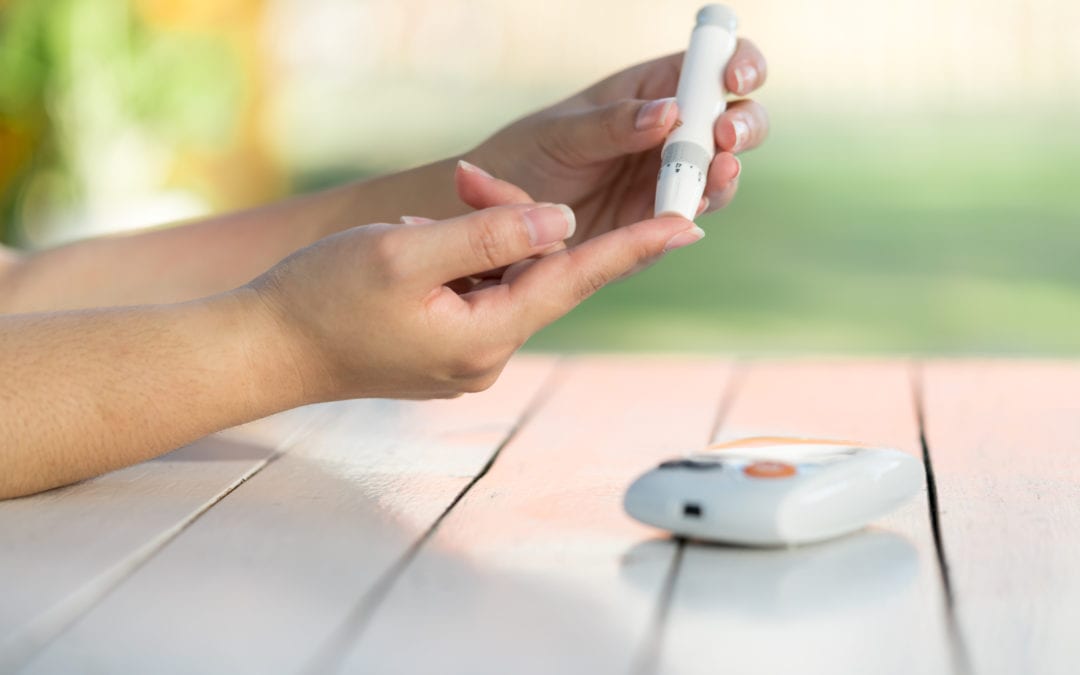Help raise awareness about diabetes during American Diabetes Month this November. Join with Americans across the country to increase awareness about the risk factors of diabetes and encourage people to make healthy lifestyle changes. Together we can fight this disease that affects 1 in 10 Americans.
What is Diabetes?
Diabetes is a chronic disease. It occurs when blood glucose, or blood sugar, is too high. Blood glucose comes from food and is the body’s main source of energy. Insulin is a hormone made by the pancreas; it helps blood glucose enter the cells to be used for energy. If you have diabetes, your body doesn’t make enough insulin or doesn’t use insulin effectively. As a result, glucose stays in your blood resulting in high blood glucose levels.
Types of Diabetes
There are three main types of diabetes: type 1, type 2 and gestational diabetes. Other types of diabetes are rare.
- Type 1 Diabetes – In type 1 diabetes, the body doesn’t make insulin. It’s usually diagnosed in children or young adults, but can appear at any time. People living with type 1 diabetes need to take insulin every day.
- Type 2 Diabetes – In type 2 diabetes, the body doesn’t make or use insulin effectively. Type 2 diabetes can develop at any time, but most commonly occurs in middle-aged or older people. It is the most common type of diabetes.
- Gestational Diabetes – Some women develop gestational diabetes during pregnancy. It usually goes away after you deliver your baby, but you are at a higher risk of developing type 2 diabetes.
Risk Factors for Diabetes
Many factors combine to determine your risk for developing type 2 diabetes. Some risk factors are genetic, while others are related to lifestyle choices. Genetic risk factors can’t be changed, but you can change your lifestyle risk factors by working toward healthy eating, regular physical activity and a healthy weight. Type 1 diabetes is thought to be caused by genes, along with environmental factors like viruses that can trigger the disease. Gestational diabetes is usually related to hormonal changes during pregnancy, but genes and lifestyle appear to play a role also.
The following are risk factors for type 2 diabetes:
- Overweight or obese
- Family history of diabetes
- Over age 45
- African American, Alaska Native, American Indian, Asian American, Hispanic/Latino, Native Hawaiian or Pacific Islander
- Low level of HDL (good) cholesterol, or high level of triglycerides
- High blood pressure
- History of gestational diabetes, stroke or heart disease
- Lack of physical activity
- Polycystic ovary syndrome (PCOS)
- Depression
- Acanthosis nigricans: thick, dark and velvety skin around your armpits or neck
Signs and Symptoms
Type 1 diabetes symptoms often develop quickly, usually in a few weeks. Type 2 diabetes symptoms usually develop more slowly over a few years. They may be so mild that you don’t notice them, and many people with type 2 diabetes don’t have any symptoms at all. Symptoms of diabetes include:
- Increased hunger, thirst or urination
- Fatigue
- Blurred vision
- Tingling, pain or numbness in the hands or feet
- Unexplained weight loss
- Sores that don’t heal
Treatment for Diabetes
There is no cure for diabetes, but with proper management, you can help prevent further health problems and live a long and happy life. Work with your healthcare team to create a self-care plan to manage your diabetes. Your self-care plan is likely to contain the following steps:
- Manage diabetes ABCs – A stands for the A1C test, which shows your average level of blood glucose over the past three months. For most people, the A1C goal is less than 7 percent. B stands for blood pressure; the goal for most people with diabetes is less than 140/90 mm Hg. C stands for cholesterol. Talk to your healthcare team about what your goals should be for your ABCs. S is for stop smoking. Smoking with diabetes increases your risk for many complications, so it’s important to stop as quickly as possible.
- Follow a diabetes meal plan – Focus on fruits and vegetables, whole grains, lean protein and non- or low-fat dairy products. Limit intake of fat, sugar or salt.
- Include physical activity in your regular routine – Work toward at least 30 minutes of physical activity on most days.
- Take your medication – Always take your medication as prescribed by your doctor, even when you feel good.
- Check blood glucose levels – Checking and recording your blood glucose level is particularly important if you take insulin.
- Work with a healthcare team – In addition to your primary care professional, you’ll need to see other healthcare professionals occasionally. Working with a team of healthcare professionals like at SLMA can help improve your care because your doctors can work together to coordinate your care for a comprehensive healthcare plan.
- Learn to cope with diabetes in healthy ways – It’s normal to feel sad, stressed out or angry when you live with diabetes, but it’s important to learn to manage these emotions in a healthy way.
Dangers of Untreated Diabetes
Elevated blood glucose levels can lead to many problems over time, including:
- Stroke
- Heart disease
- Kidney disease
- Nerve damage
- Eye problems
- Dental disease
- Foot problems
Work with your healthcare team to manage your diabetes to help reduce your risk of developing diabetes-related complications.
Diabetes impacts many Americans. By making healthy lifestyle choices, you can help lower your risk of developing the disease or improve your management of diabetes. Get inspired by American Diabetes Month to make one change toward a healthier lifestyle, and encourage others to do the same.

